Cottage cheese and egg flatbread is a delicious, versatile dish that many home cooks appreciate. It brings a soft, chewy texture and a bright flavor that can elevate any breakfast or lunch spread. This recipe blends protein from eggs with creamy cottage cheese for a flatbread that tastes both light and satisfying. Moreover, it is budget-friendly, making it an excellent choice for families. Because it uses just a few common ingredients, you can whip up this treat on busy mornings or lazy weekends. Most importantly, it is quick and easy to customize. You can add various seasonings, fresh herbs, or even a hint of spice. So get ready, and discover why you should try making this simple yet scrumptious flatbread in your own kitchen. Discover more detailed recipes for cottage cheese flatbread here.
Why This Cottage Cheese and Egg Flatbread Stands Out
This flatbread offers a unique spin on traditional recipes, which usually rely on yogurt or water for moisture. Instead, the mixture of cottage cheese and eggs creates a moist, springy dough. In addition, cottage cheese contains small curds that contribute extra protein and a mild tang. Because of this, the flatbread has a tender bite that stays soft for hours. Another advantage is how well it pairs with other flavors. You can drizzle honey on top for a sweet twist, or you can add caramelized onions to introduce savory depth. Furthermore, this flatbread is easy to handle. It rarely sticks to your rolling pin, which makes it beginner-friendly.
Most classic flatbreads use yeast or chemical leaveners. In contrast, this flatbread relies on eggs for lift. Although it does not puff up like a yeasted bread, it still offers an airy crumb. That makes it perfect for stacking, rolling, or layering with toppings. Because it is quite flexible, you can fold it to create wraps with your favorite fillings. Even so, it stays sturdy enough to hold heavier toppings like chicken or roasted veggies. The use of cottage cheese and eggs delivers a distinctive balance of taste and texture. For troubleshooting soggy flatbread, check out this guide.
Key Ingredients for an Irresistible Egg-and-Cheese Flatbread
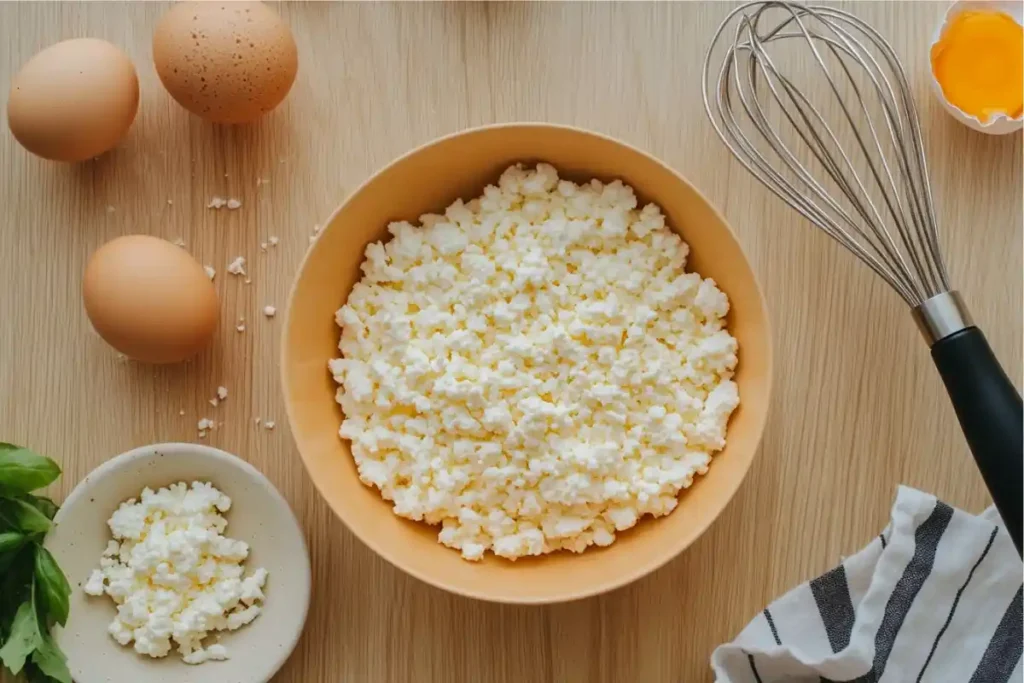
- Eggs: They act as both binder and leavening agent. Fresh eggs are best, and organic eggs often yield a richer color and flavor.
- Cottage Cheese: A lower-sodium variety is often preferred, though any kind will work. Look for small-curd cottage cheese if you want a smoother consistency.
- All-Purpose Flour: This common flour forms the dough’s structure. You can also mix in whole-wheat flour if you prefer a nutty taste.
- Baking Powder (Optional): While not mandatory, a small amount can help the flatbread become slightly puffier.
- Seasonings: Because cottage cheese is mildly salty, always taste-test before adding more salt. You can use black pepper, onion powder, garlic powder, or even a sprinkle of dried herbs to enhance the bread’s flavor.
Step-by-Step Guide to Making Cottage Cheese Flatbread
- Gather and Measure: Start by collecting your eggs, cottage cheese, flour, and preferred spices.
- Combine Wet Ingredients: In a bowl, whisk the eggs. Then, fold in the cottage cheese. Mix until well-blended, but do not worry if small lumps remain.
- Incorporate Dry Ingredients: Gradually add flour and any seasonings. You can also add a pinch of baking powder if you like a slightly taller flatbread. Stir gently until a soft dough forms.
- Knead the Dough: Lightly flour your work surface, then knead the dough for a few minutes. Because the dough can be sticky at first, keep extra flour on hand. Stop when the dough feels smooth and pliable.
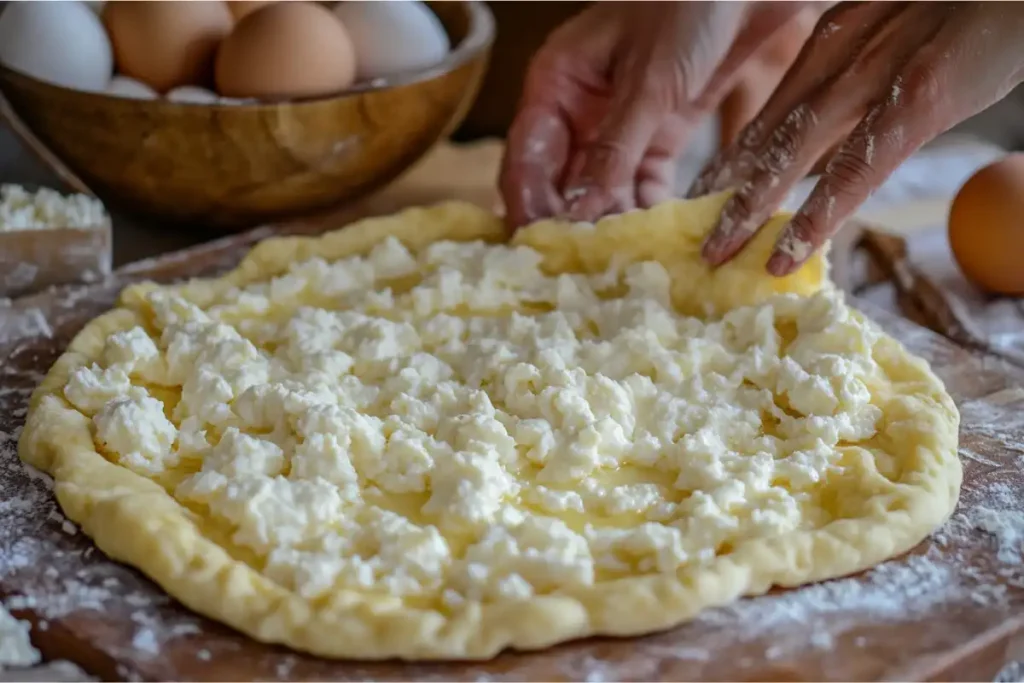
- Rest the Dough: Wrap the dough in plastic wrap or cover with a clean towel. Let it rest for 15-20 minutes to let the gluten relax. This rest period also allows the flavors to come together.
- Divide and Shape: Cut the dough into smaller portions, and roll each piece into a ball. Flatten each ball with a rolling pin. Aim for a thickness of about ¼ inch for a nice balance between chewy and crispy.
- Cook on a Hot Surface: Heat a nonstick skillet or griddle over medium heat. Add a bit of oil if necessary. Place each flatbread onto the hot surface, then cook until golden brown. Flip after about 2-3 minutes per side.
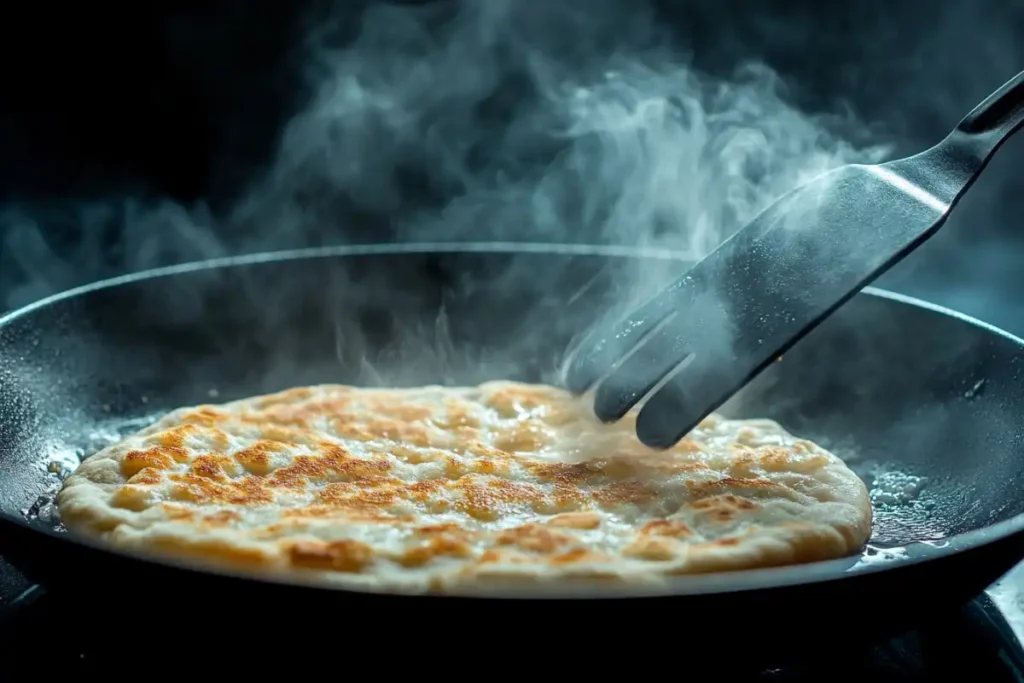
- Cool and Enjoy: Transfer the cooked flatbreads to a wire rack or plate. Because they retain moisture, let them cool slightly. Serve warm or store them for later use. Not sure when your flatbread is ready? Read how to tell when cottage cheese flatbread is done.
Flavor Variations for Cottage Cheese and Egg Flatbread
Cheesy Twist with Herbs
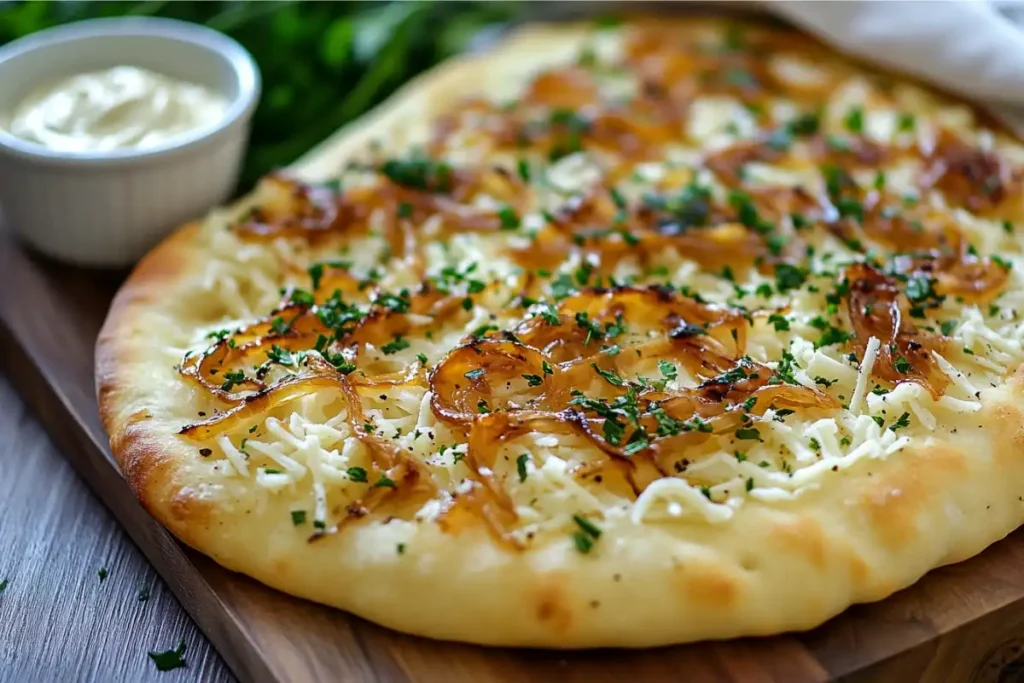
If you love cheese, you can sprinkle shredded cheddar or mozzarella over the dough before cooking. You can also add fresh or dried herbs such as oregano, basil, or parsley. This variation increases flavor while retaining the soft texture of the egg-and-cheese flatbread.
Sweet Cinnamon Flatbread
For a sweet variation, add a teaspoon of cinnamon and a touch of sugar or honey to the dough. This approach pairs well with fruit preserves or a drizzle of maple syrup. Because cottage cheese has a mild flavor, it can blend nicely with sweet toppings.
Spicy Jalapeño Kick
If you prefer something spicier, incorporate chopped jalapeños or chili flakes into the dough. Then top it with melted cheese and a sprinkle of cilantro. Furthermore, you can add diced tomatoes and onions. This twist gives the flatbread a Southwest flair while preserving its pillowy feel.
Whole-Wheat Goodness
For a heartier option, use half whole-wheat flour. This change adds more fiber and a lightly nutty taste. You can also swap in some flax seeds or chia seeds for even more texture. Because whole grains absorb more liquid, you may need a bit more flour to achieve a workable dough.
Ways to Serve or Enjoy Egg-and-Cheese Flatbread
This flatbread is extremely adaptable. You can serve it on its own, but there are many other creative ways to enjoy it:
- Breakfast Sandwich: Fold the flatbread around scrambled eggs, crispy bacon, or sautéed mushrooms. Because the bread stays soft, it holds fillings easily.

- Lunch Wrap: Use it as a wrap with grilled chicken, fresh lettuce, and tangy dressing. Or simply add sliced cucumbers and hummus for a vegetarian version.
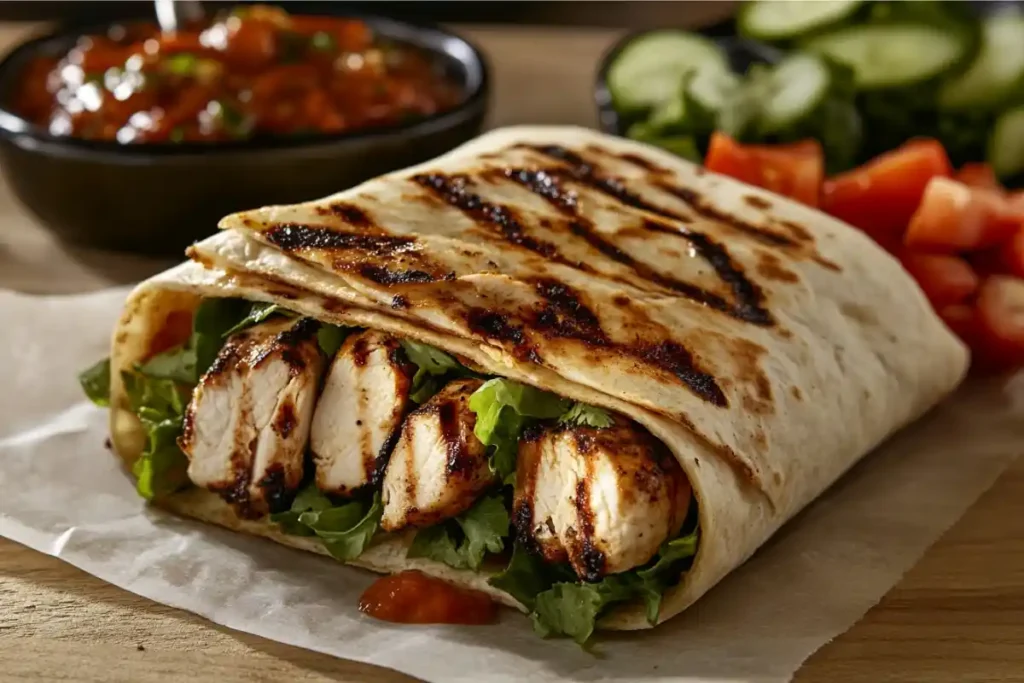
- Pizza-Style: Top the flatbread with your favorite pizza sauce, shredded cheese, and pepperoni. Then, bake or broil for a quick personal pizza.
- Dipping Companion: Serve slices of the flatbread with creamy dips like tzatziki, guacamole, or classic ranch dressing. Because of its neutral flavor, it pairs with almost any dip.
- On-the-Go Snack: Wrap peanut butter and jelly inside. Or slather on some almond butter and banana slices for an energy-boosting treat.
Tips for the Perfect Egg and Cottage Cheese Flatbread
- Drain Excess Liquid: Cottage cheese can have a fair amount of liquid. If you notice too much moisture, strain the cottage cheese before mixing. Alternatively, you can reduce the eggs slightly.
- Try Different Textures: Use small-curd cottage cheese if you want fewer lumps. Because large-curd cottage cheese can be chunkier, you may want to pulse it in a blender first.
- Monitor Heat: Keep your pan at medium heat to avoid burning. If the pan gets too hot, the outside might become too dark while the inside remains undercooked.
- Store Properly: Wrap leftovers in foil or place them in an airtight container. This step helps preserve freshness and texture.
- Reheat Carefully: If you want to reheat, a quick zap in the microwave works. However, crispier textures return if you reheat in a toaster oven or skillet.
Health Benefits of This Protein-Packed Flatbread
Eggs and cottage cheese are both complete sources of protein. This means they contain all the essential amino acids your body needs. Because of that, this flatbread helps sustain energy levels and supports muscle repair. It also fits nicely into many balanced diets, especially if you choose lower-fat cottage cheese. In addition, eggs contain vitamins and minerals, including Vitamin D and B vitamins. The flatbread includes minimal added fats, especially if you cook it on a nonstick skillet or lightly oiled surface. You can further enhance its nutritional profile by opting for a whole-wheat flour blend. In short, you can enjoy a meal that fuels you without weighing you down. Learn more about what cottage cheese does in baking.
Frequently Asked Questions
Why add cottage cheese to eggs?
Cottage cheese brings a creamy texture and added protein. It also helps keep the flatbread moist and soft. The result is a richer flavor without making the dough too heavy.
Why is my cottage cheese flatbread soggy?
Excess moisture can cause sogginess. Try straining the cottage cheese or using less egg if you notice a watery dough. Also, ensure your skillet is hot enough to seal the surface quickly.
How long does the cottage cheese flatbread last?
It stays fresh for about two to three days when stored in an airtight container. Refrigerate the flatbread for best results, and warm it in the skillet or oven when ready to eat.
What does cottage cheese do in baking?
Cottage cheese helps add moisture, tenderness, and protein to baked goods. In a flatbread recipe, it enriches the texture and flavor without requiring additional oils.
Conclusion
Cottage cheese and egg flatbread provide a perfect balance of savory flavor and soft texture. Because it is easy to customize, you can alter it to suit different tastes. Whether you choose sweet toppings or a spicy filling, this protein-rich bread will make any meal more satisfying. With just a handful of ingredients, you can create a dish that delights your taste buds and meets your nutritional needs. So gather your cottage cheese, your eggs, and your favorite seasonings. Enjoy this simple yet impressive flatbread at breakfast, lunch, or any time you crave a hearty snack.

